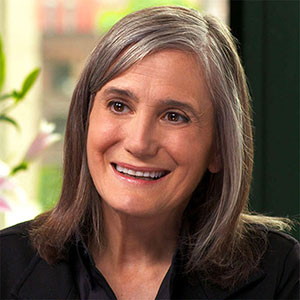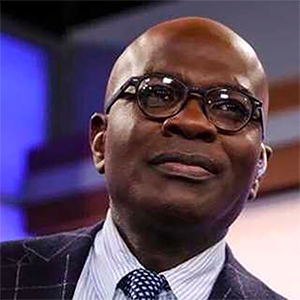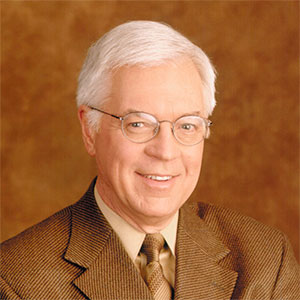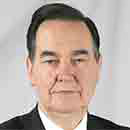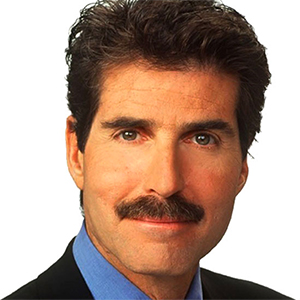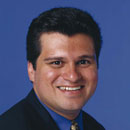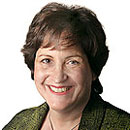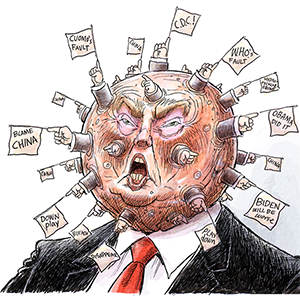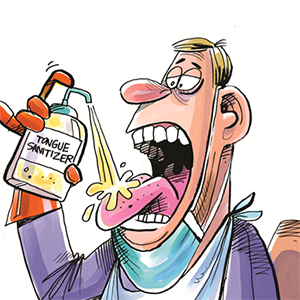Politics
/ArcaMax

Michael Hiltzik: The latest government inflation and GDP figures are worthless, and will be for months to come
The federal government's monthly releases of economic statistics — especially the inflation rate and growth as tracked by gross domestic product — have long occasioned partisan preening (or denunciation) and for a general public stock-taking of the health of the economy.
Not this month. This time, they're the occasion for doubt and ...Read more
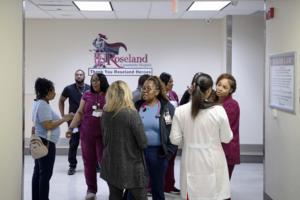
Editorial: Medicaid fraud is a problem. But so is a lack of understanding about the program
Medicaid is a federal program jointly funded with the states, providing health and long-term care insurance to more than 80 million low-income Americans.
And if you didn’t know all of that, you’re not alone.
The government has spent a fortune over the years de-emphasizing the term “Medicaid,” instead promoting other names that carry ...Read more

Commentary: When silence becomes a green light for normalizing cruelty
The reaction to President Donald Trump’s recent social media post was immediate and telling.
For many, the post was stunning in its cruelty, a line so clearly crossed it demanded condemnation. For others, it was dismissed, defended or waved away as exaggeration, provocation or “just how he talks.” That divide is the story. Because when ...Read more

Editorial: Upper Basin states must be willing to comprom
The states along the Colorado River are proving the truth of the famous adage often attributed to Mark Twain: “Whiskey is for drinking; water is for fighting over.”
At the end of the year, the current agreement governing water in the Colorado River will end. The agreement includes seven states. The four Upper Basin states are Colorado, New ...Read more

Mary Ellen Klas: States are now the check on America's executive
Thank goodness for state governments. One of the most underappreciated stories in 2025 was the role states played in checking federal overreach. As the Trump administration barreled through norms, rules and laws, state officials — sometimes from both parties — supplied the friction to slow the administration’s power grab.
Trump swept ...Read more

Allison Schrager: The economy needs a little bit of unfairness
There are a lot of reasons, some deserved and some not, for Americans’ distrust of their institutions. Lately I have been thinking about one of the more counterintuitive ones: Our schools, governments and even employers are trying too hard to make things fair.
In so doing, they are not only setting themselves up for failure — and eventually...Read more

Commentary: Will generative AI robots replace surgeons?
In medicine’s history, the best technologies didn’t just improve clinical practice. They turned traditional medicine on its head.
For example, advances like CT, MRI, and ultrasound machines did more than merely improve diagnostic accuracy. They diminished the importance of the physical exam and the physicians who excelled at it.
Now, an ...Read more

Commentary: US health care in 2025: Chaos, costs, and controversy without real progress
The year 2025 has been one of the most turbulent years in modern U.S. health care. The headlines were explosive, the rhetoric dramatic, and the controversies nonstop. Yet for all the hoopla and upheaval, the medical care Americans receive now, month in and month out, looks no better than what they experienced on Jan. 1 — but far more expensive...Read more

Commentary: For animals' sake, let's not start the New Year with a bang
What are you doing New Year’s Eve? Showing up at a friend’s doorstep to smash a plate? Eating a dozen grapes in sync with the 12 chimes of the clock? Perhaps you’re planning to bang a loaf of bread against the wall and then deep-clean your house before midnight. Or maybe you’re bringing luck, love or peace in the new year by putting on a...Read more

Editorial: A bigger European Union must be a better one, too
Does the European Union — 27 states, 450 million people, politically fractious even in the best of times — need to expand even more? The answer, in the European way, is a qualified and equivocal yes.
Nine countries are officially in line to join the bloc, and EU officials have recently hinted some may be added by 2030. The European ...Read more

Javier Blas: The Suez Canal reopening is a 2026 gift for commodities
The business of shipping goods around the world has suffered shock after shock since 2000, culminating in the effective closure of the Red Sea and Suez Canal two years ago. Don’t say it too loud, but there’s a good chance the waterway can reopen in 2026, reducing transportation costs and easing the strain on global supply chains.
It's hard ...Read more

Karishma Vaswani: Islamic State isn't back in Asia, but its ideas endure
The deadliest domestic terror attack in Australia’s history is raising an uncomfortable question: Is there an Islamic State revival in Asia?
Despite years of counterterrorism successes and the group’s territorial collapse in Iraq and Syria, the assault at Sydney’s Bondi Beach highlighted a troubling reality: This radical ideology remains...Read more

Commentary: Farmers should unite to fight unfair trade policies
2025 has been a tough year for farmers.
As if the perennial problems of price volatility and changing weather patterns were not enough, the Trump administration’s trade war with China made matters worse. In the past year, grain farmers have seen their markets increasingly taken by their Brazilian counterparts. Even after reaching a deal to ...Read more
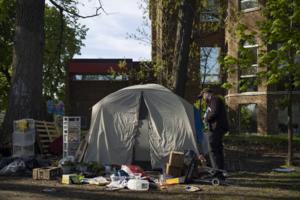
Commentary: Federal policy ignores the most perilous weeks of addiction treatment
Federal agencies are preparing new guidance on recovery housing, transitional housing and long-term recovery supports. The shift comes at a time when communities face growing pressure from rising addiction, repeat overdoses, and a widening gap between treatment and stable housing. Programs serving people in recovery need clearer expectations, ...Read more

Michael Hiltzik: What does Trump have against Venezuela? His explanations keep changing
President Donald Trump's geopolitical ambitions have almost been harder to follow than his other policies, encompassing as they have the annexation of Greenland, the conversion of Canada into the 51st state and the retaking of the Panama Canal.
Trump's current focus is on Venezuela, which has been led by the dictator Nicolás Maduro since 2013....Read more

Editorial: Ban social media for teens younger than 16
At the advent of Facebook in 2004, you had to have a college email address to create an account. Mark Zuckerberg’s creation was a relatively controlled, college-age environment in which you could learn more about and interact with your peers.
Those days are long over, and kids as young as 13 now can log into a wide array of social media ...Read more

James Stavridis: Hegseth is targeting the military's 'constitution'
There have been recent reports that the U.S. Department of Defense, under Secretary Pete Hegseth, is planning significant revisions to its Unified Command Plan (UCP).
This document lays out the U.S. military's global command structure and defines the missions and geographic areas of responsibility of the most senior four-star commanders.
This...Read more

Editorial: Finally -- Jackpot reporting burden will be eased
While the gaming industry waits on Congress to clean up an inane provision in President Donald Trump’s “one big beautiful bill” that taxes gamblers on winnings they never earned, there is a small bit of good news on the wagering tax front.
The president’s signature legislation, passed in May (House) and July (Senate) without Democratic ...Read more

Gustavo Arellano: 'It's a Wonderful ICE?' Trumpworld tries to hijack a holiday classic
For decades, American families have gathered to watch "It's a Wonderful Life" on Christmas Eve.
The 1946 Frank Capra movie, about a man who on one of the worst days of his life discovers how he has positively impacted his hometown of Bedford Falls, is beloved for extolling selflessness, community and the little guy taking on rapacious ...Read more

Editorial: Climate change Grinches look to ruin the holidays
Who doesn’t have a soft spot for the smells of the holidays? The aromatic cinnamon stick flavoring a cup of eggnog or the hint of vanilla in grandma’s baked goods can trigger wonderful memories of the Christmas season.
Leave it to progressive climate Grinches to warn that global warming represents a threat to some of these cherished ...Read more

